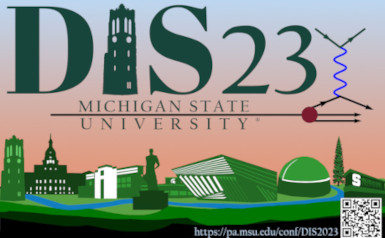Speaker
Description
Jets are collimated sprays of final-state particles produced from initial high-momentum-transfer partonic (quark/gluon) scatterings in particle collisions. Since jets are multi-scale objects that connect asymptotically free partons to confined hadrons, jet substructure measurements in vacuum can provide insight into the parton evolution and the ensuing non-perturbative hadronization processes. Experimentally, jet measurements need to be corrected for detector effects to be compared with theoretical calculations and model predictions. The traditional correction procedure uses Bayesian inference in as many as three dimensions and requires the observables to be binned. A novel correction procedure, MultiFold, uses the machine learning technique to correct with higher dimensionality in an un-binned fashion. Furthermore, MultiFold is potentially more desirable because it accounts for the correlation in the multi-dimensional observable phase space. In this measurement, we have applied this technique for the first time to hadronic collision data.
The STAR experiment recorded data for $\sqrt{s} = 200$ GeV $pp$ collisions in 2012. Using this dataset, we reconstruct jets with charged particle tracks measured in the Time Projection Chamber and neutral particles measured in the Barrel Electromagnetic Calorimeter. After fully correcting six jet observables ($p_\mathrm{T}$, $Q^{\kappa}$, $M$, $M_g$, $R_g$ and $z_g$) simultaneously for detector effects using MultiFold, we present a selection of corrected observables and the correlations among them and compare them to Monte Carlo event generators. Such correlation measurements between jet observables allow for the study of parton shower and hadronization on a jet-by-jet basis. For example, by measuring the correlation between a SoftDrop observable and a collinear drop observable, we learn about the interplay between non-perturbative and perturbative processes.
| Submitted on behalf of a Collaboration? | Yes |
|---|




